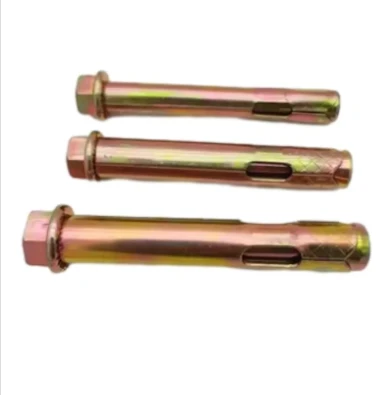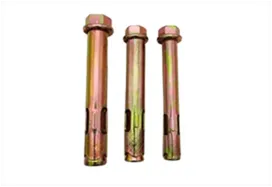feb. . 19, 2025 04:45 Back to list
hex nut sizes
Understanding bolt sizes is essential for anyone involved in construction, manufacturing, or even DIY projects. Bolts, being critical fasteners, are used in a variety of applications to hold together or secure different materials. Their sizes directly impact the strength and stability of a structure, making the correct choice crucial for safety and performance. This article delves into the key considerations about bolt sizes that ensure you make the most informed decisions.
Material selection also influences bolt performance. Common materials include steel, stainless steel, brass, and aluminum. Steel bolts are strong and versatile but can rust if not treated or coated. Stainless steel provides superior corrosion resistance, making it ideal for outdoor or moisture-rich environments. Brass is often chosen for its resistance to corrosion and electrical conductivity, while aluminum offers a lightweight alternative for less demanding applications. Coating and treatment choices, such as galvanization or anodizing, can further enhance the bolt's performance, particularly in harsh environments. These processes can improve corrosion resistance and durability, which are especially important in construction and automotive industries. An often-overlooked aspect of bolt sizing is the tool compatibility. Ensure that you have the appropriate wrenches or sockets for the bolt size you've chosen. This will not only make installation and adjustments easier but also ensure that the bolt is fastened correctly, avoiding potential safety issues or damage. Finally, understanding bolt gradings and standards is crucial. Grades, such as 5, 8, or 10.9, indicate the strength level of bolts, with higher numbers signifying stronger materials. It is important to select a bolt grade that matches the application's requirements. Over-specifying can lead to unnecessary cost and weight, while under-specifying can result in structural failure. In conclusion, choosing the right bolt size involves more than just matching diameter and length. It requires an understanding of the interaction between these dimensions, the environment, material properties, and tool compatibility. Mastery of these elements not only ensures the safety and effectiveness of the bolted connection but also extends the lifespan of the structure it supports. By prioritizing these factors, you can make informed choices that enhance both the functionality and reliability of your projects, whether large-scale construction or small DIY endeavors.


Material selection also influences bolt performance. Common materials include steel, stainless steel, brass, and aluminum. Steel bolts are strong and versatile but can rust if not treated or coated. Stainless steel provides superior corrosion resistance, making it ideal for outdoor or moisture-rich environments. Brass is often chosen for its resistance to corrosion and electrical conductivity, while aluminum offers a lightweight alternative for less demanding applications. Coating and treatment choices, such as galvanization or anodizing, can further enhance the bolt's performance, particularly in harsh environments. These processes can improve corrosion resistance and durability, which are especially important in construction and automotive industries. An often-overlooked aspect of bolt sizing is the tool compatibility. Ensure that you have the appropriate wrenches or sockets for the bolt size you've chosen. This will not only make installation and adjustments easier but also ensure that the bolt is fastened correctly, avoiding potential safety issues or damage. Finally, understanding bolt gradings and standards is crucial. Grades, such as 5, 8, or 10.9, indicate the strength level of bolts, with higher numbers signifying stronger materials. It is important to select a bolt grade that matches the application's requirements. Over-specifying can lead to unnecessary cost and weight, while under-specifying can result in structural failure. In conclusion, choosing the right bolt size involves more than just matching diameter and length. It requires an understanding of the interaction between these dimensions, the environment, material properties, and tool compatibility. Mastery of these elements not only ensures the safety and effectiveness of the bolted connection but also extends the lifespan of the structure it supports. By prioritizing these factors, you can make informed choices that enhance both the functionality and reliability of your projects, whether large-scale construction or small DIY endeavors.


